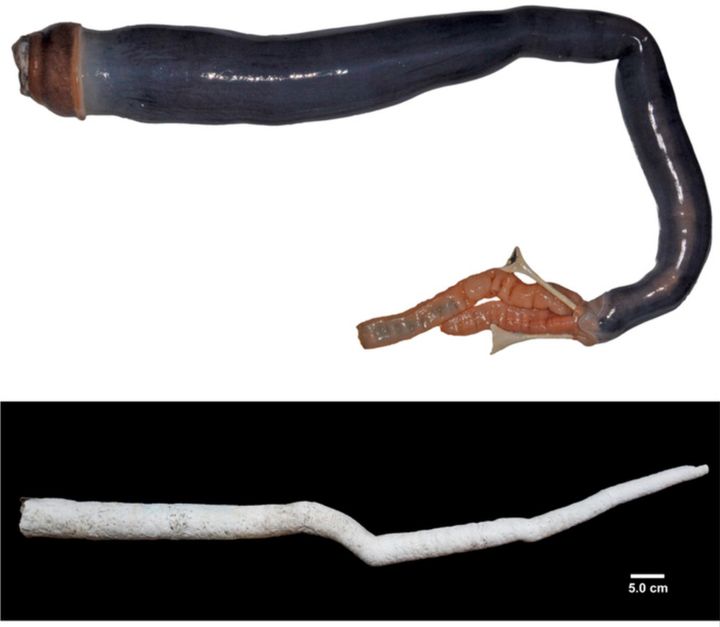Live, long and black giant shipworm found in Philippines
Wed 19 Apr 2017, 15:18:21

Scientists have found live specimens of the rare giant shipworm for the first time, in the Philippines.
Details of the creature, which can reach up to 1.55m (5ft) in length and 6cm (2.3in) in diameter, were published in a US science journal.
The giant shipworm spends its life encased in a hard shell, submerged head-down in mud, which it feeds on.
Though its existence has been known for years, no living specimen had been studied until now.
Despite its name, the giant shipworm is actually a bivalve - the same group as clams and mussels.
The "rare and enigmatic species", also known as Kuphus polythamia, is the longest living bivalve known to man, according to the study published in the Proceedings of the National Academy of Sciences of the United States of America (PNAS).
The strange shells have been found for centuries, because they
are "very sturdy and they last a long time," said Daniel Distel, the report's chief author. "But we've never known where to find them."
are "very sturdy and they last a long time," said Daniel Distel, the report's chief author. "But we've never known where to find them."
The discovery came about by chance, when Dr Distel's team was working in the Philippines with local scientists.
"One of our students came in and said, 'hey, look at this' - he'd found this really great video on YouTube," Dr Distel said.
"We searched the literature and the scientific sources for years, and then we find it on YouTube. It's the miracle of social media."
That led a team of scientists from the US, the Philippines and France to find and collect five giant shipworms in Mindanao in a marine bay.
For Dr Distel, who works at Ocean Genome Legacy - a research group and "gene bank", storing the genetic material of rare ocean creatures - it was a major find.
But the scientists are keeping the exact location secret.
No Comments For This Post, Be first to write a Comment.
Most viewed from Specials
Most viewed from World
AIMIM News
Latest Urdu News
Most Viewed
May 26, 2020
Do you think Canada-India relations will improve under New PM Mark Carney?
Latest Videos View All
Like Us
Home
About Us
Advertise With Us
All Polls
Epaper Archives
Privacy Policy
Contact Us
Download Etemaad App
© 2025 Etemaad Daily News, All Rights Reserved.













.jpg)
.jpg)
.jpg)
.jpg)
.jpg)
.jpg)
.jpg)
.jpg)
.jpg)




















